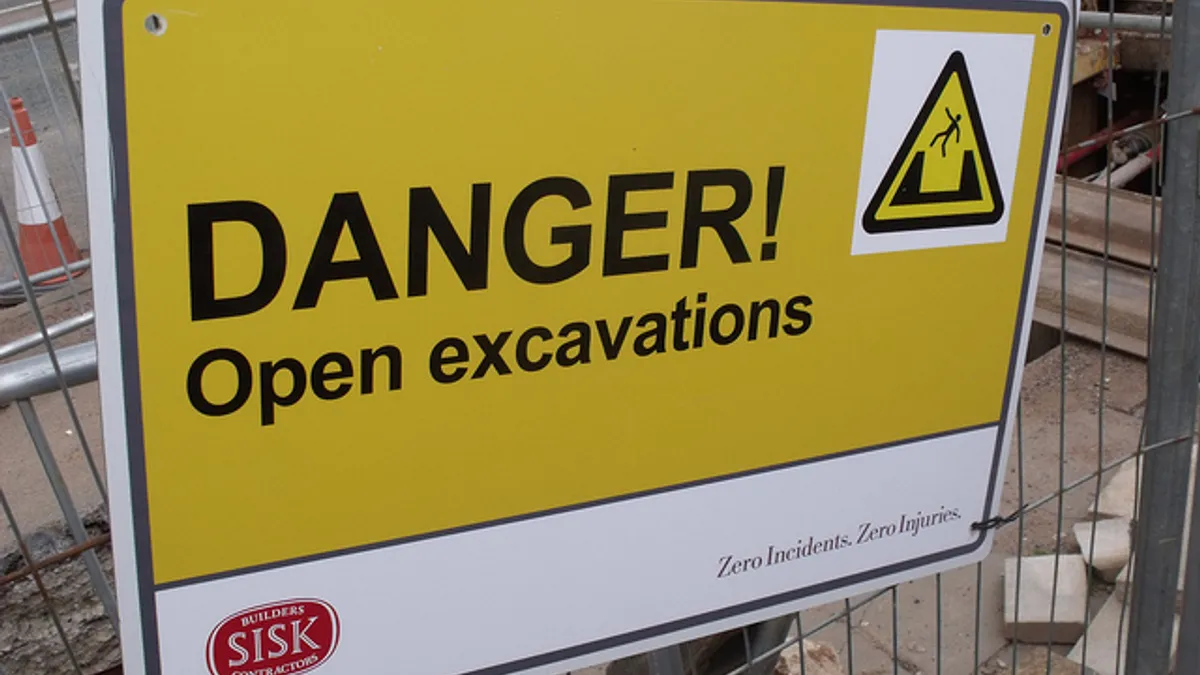Dive Brief:
- The Occupational Health and Safety Administration has cited Hurtado Construction Co., a Richmond, TX,-based underground utility contractor, for one serious and four repeat violations. The agency fined the company $86,240 in relation to excavation and trench-related hazards.
- OSHA said it initiated an inspection on a Hurtado construction site in Katy, TX, in August 2015 as part of its National Emphasis Program on Trenching and Excavation. OSHA said the serious violation was a result of the company failing to provide adequate protection in excavations where employees were working in areas with accumulated water.
- The agency said the repeat violations include failing to provide a safe means of leaving the trench, failing to provide protection from excavated materials, failing to inspect an excavation site prior to the start of work, and failing to provide adequate cave-in protection.
Dive Insight:
"A trench cave-in can take a life in a matter of seconds. Repeatedly exposing workers to trenching hazards without adequate protections is unconscionable," Joann Figueroa, OSHA's area director in the Houston North office, said in a release.
In a tragic trenching-related case in Pennsylvania, OSHA fined a bridge repair company $140,000 for willful violations earlier this month and placed it in the agency’s Severe Violator Enforcement Program after a worker died in a trench collapse.
In another case late last year, the Alaska Department of Labor and Workforce Development fined an Alaska contractor $560,000 for a trench collapse that killed a worker. The agency said there was an evident lack of safety standards that caused the collapse, but the company exacerbated the situation by fatally injuring the worker with two excavators while trying to rescue him.
In addition, OSHA fined a Massachusetts company $14,000 in November after one of its workers drowned when a pipe burst in an excavation site.
OSHA is set to raise its fines later this year for the first time since 1990. The agency is expected to raise its fines by at least 80% to get in line with the Consumer Price Index.













